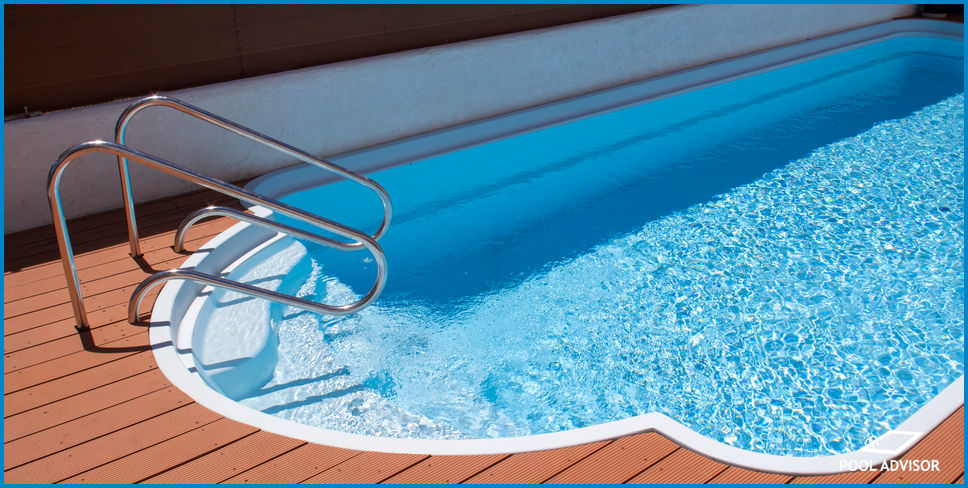
Fibreglass Pool Gelcoat Problems - What Are They?
If you are interested in having a fibreglass pool installed or own one already, it can be useful to understand the specific problems that affect their gelcoating.
Because these problems are unique to fibreglass pools, it’s important to know what signs to look for if you suspect that your gelcoat has become damaged.
In this article, we will cover several different types of fibreglass pool gelcoat problems while also including information about how you can prevent these problems from occurring.
Spider Cracks
Spider cracks, sometimes called stress cracks or hairline cracks, appear as dark-coloured lines on the outermost layer of the pool’s surface. These cracks do not indicate structural damage in your pool but are a sign that the gelcoat of your pool is not sturdy.
It is more common for these cracks to occur in one area of your pool rather than for them to be widespread. These cracks occur when pressure is applied on your pool’s innermost surface that exceeds the gelcoat’s ability to flex.
This can occur as a result of improper manufacturing, low-quality shipping, or poor installation. When gelcoats are applied too thickly during the manufacturing process, these spider cracks are more likely to occur.
Spider cracks are difficult to fix once they emerge. Most advice focuses on the prevention of spider cracks by encouraging prospective pool owners to choose quality fibreglass manufacturers and installation teams.
Fading Or Discoloration
Fading and discoloration of fibreglass pool gelcoat surfaces tends to be caused by one of three pool problems: gelcoat oxidation, calcium build-up, or overuse of chemicals.
All of these conditions can cause the once-vibrant colour of your pool’s gelcoat to appear faded or as if it is covered in a thin layer of white material. This material may be present even if the surface of your pool feels smooth to the touch.
Calcium build-up can occur in fibreglass pools in a way that resembles scale, but this is not the only way that calcium build-up can be present.
While patches of calcium scale tend to be rough in texture, many formations of excess calcium produce dusty or even smooth surfaces, all of which can cause your gelcoat to appear faded or discoloured.
Overuse of chemicals can occasionally cause fading or discoloration to a fibreglass pool gelcoat, but this is rare. Certain pool chemicals such as chlorine or acids used for adjusting the pH of your water can be highly volatile, meaning they can react with your pool's surfaces.
Chemicals such as these are likely to cause stains in specific areas if added to your pool without adequately diluting them first. Additionally, if your pool’s chemistry is left imbalanced for prolonged periods, this can also slowly contribute to the ‘bleaching’ of your pool’s gelcoating.
Gelcoat oxidation can also cause similar effects, but we will cover this unique condition in another section.
Gelcoat Oxidation
Gelcoat oxidation can present itself as a cloudy or white layer that forms on top of your pool’s gelcoating. Oxidation typically shows up as a chalky substance that looks similar to calcium deposits, so it can be hard to tell the difference at first.
To test the white substance on your pool’s surface, scrub it lightly with a stiff-bristled brush.
Calcium scale deposits tend to resist scrubbing unless a significant amount of pressure and effort is used. On the other hand, gelcoat chalking, which occurs as a result of oxidation, will flake off fairly easily when exposed to brushing.
Chalking is a normal occurrence with aged fibreglass pools, but it can also occur as a result of prolonged imbalances in pool chemistry.
The most common chemical imbalances that cause gelcoat oxidation and chalking to occur are high pH, high total alkalinity, high free chlorine, and low calcium hardness levels.
Black Spots, Bubbles, And Osmosis
If you notice black spots or bubbles occurring inside your pool’s gelcoat, this can be a sign of osmosis. These conditions begin to occur when pin-sized holes form in the gelcoating of your pool, allowing pool water to come in contact with the fibreglass pool shell.
When the water comes in contact with this fibreglass, it can create black spots or bubbles underneath the gel coating.
Although these spots are visible in a way that makes them resemble iron stains, because they are contained beneath your pool’s gel coating, they are usually impossible to remove.
Black spots and bubbles that occur as a result of osmosis are typically only found in fibreglass pools that are significantly aged, such as those that are 40 years old or older.
If you find these conditions occurring in a pool that was newly installed, it is likely due to poor-quality manufacturing or installation. The only way to remove black spots and water bubbles is to have your fibreglass pool resurfaced by a team of professionals.
Conclusion
Just like with concrete pools and the various surfaces they can be equipped with, the gelcoat surface of fibreglass pools is susceptible to its own unique set of problems.
Unlike with many concrete pool surfaces, most issues that occur in the gelcoat of fibreglass pools must be fixed by a professional, typically with fibreglass resurfacing of your pool.
Luckily, maintaining proper water chemistry can reduce the risks of these gelcoat problems occurring in your pool.
Do you have any questions about fibreglass pool gelcoat problems? Get in touch with us with any questions you may have; we’d love to help out!

Louis
A chemical engineer by trade, Louis is committed to debunking myths in the pool industry by explaining the underlying chemistry and making it accessible to all.
